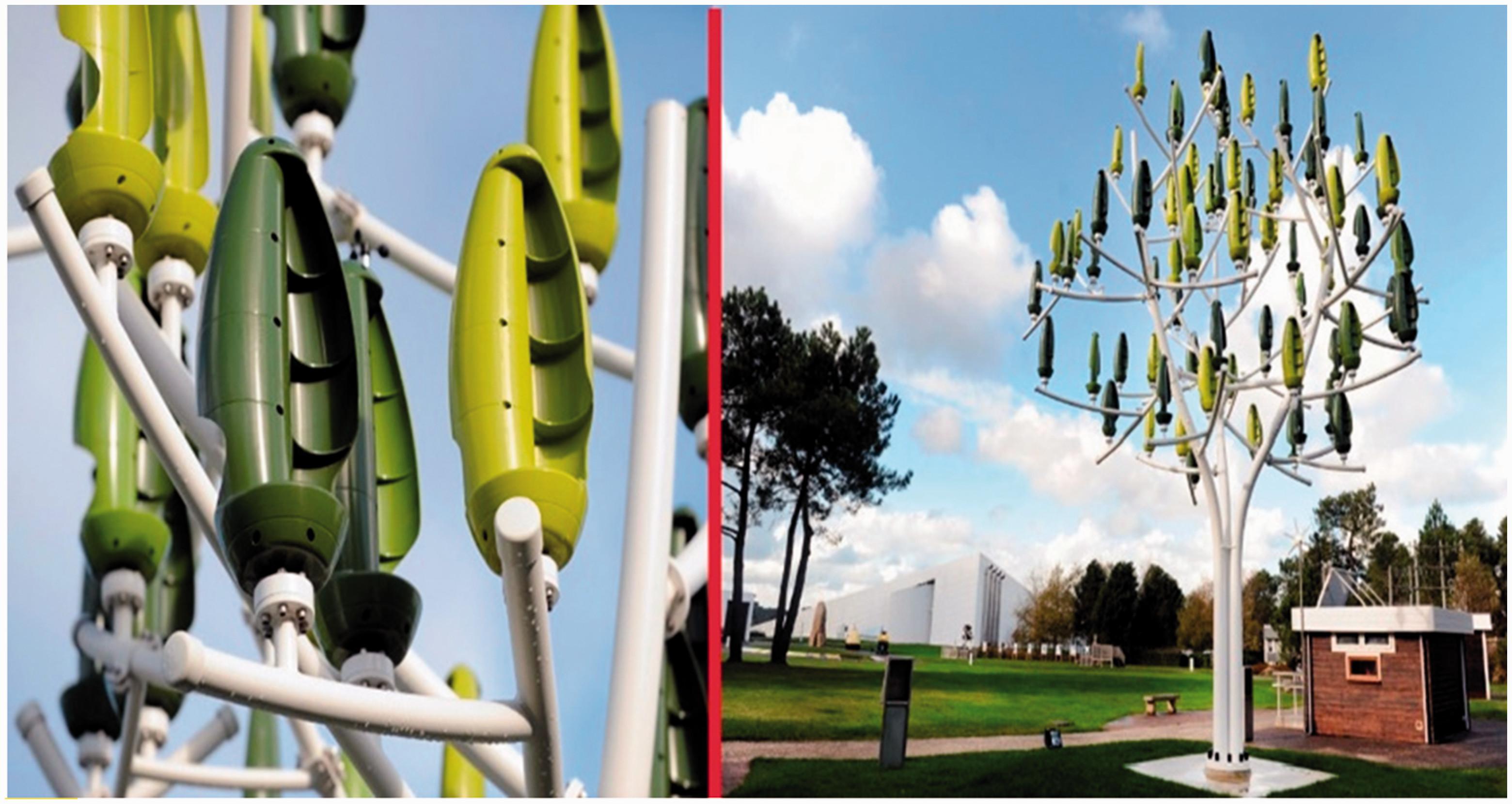A groundbreaking technology, Aeroleaf, is emerging as a game-changer in pursuing carbon neutrality within the European Union. Developed by French company New World Wind, the technology manifests as WindTrees – micro wind turbines ingeniously designed to resemble trees.
The visionary behind Aeroleaf, Luc Eric Krief, emphasizes the biomorphic nature of WindTrees, stating, “As it is biomorphic, people cannot see at first look that it is a renewable system.” The unique design comprises metallic structures resembling trees, featuring branches adorned with small wind turbines mimicking leaves. These WindTrees, already installed globally, are a testament to the technology’s versatility, gracing locations in Europe, the US, South Korea, and specific cities like Birmingham (UK), Vermont (USA), and Switzerland.
One of the remarkable features highlighted by Krief is the customizable color of the trunk and leaves, ensuring seamless integration with various environments. Ranging from five to 33 feet in height, WindTrees offer straightforward installation even in urban settings, requiring only a single bracket and three bolts. The compact size not only simplifies installation but also addresses challenges faced by larger turbines, such as bird collisions, and operates in silence.
The WindTrees operate on a self-consumption model, allowing small-scale wind turbines to directly supply energy to a building’s existing electrical system. With the capability to generate energy continuously, 24/7, any surplus can be efficiently stored in batteries with a 60Ah capacity. Looking ahead, New World Wind plans to unveil an enhanced design by January 2024, aiming to triple the power output of the Aeroleaf.
The potential of this innovation is impressive, with each WindTree leaf capable of generating up to 1,000 kilowatt-hours per year. In optimal conditions, a 36-leaf WindTree could achieve a maximum annual output of 36,000 kWh, significantly contributing to a household’s energy needs. Krief notes that, unlike solar panels limited to specific hours, WindTrees provide energy seven days a week, 24 hours a day. Excess energy, if generated, can be stored in the tree’s four batteries, each with a 60Ah capacity.
New World Wind has deployed 130 WindTrees globally, showcasing the technology’s success in diverse regions. From urban landscapes in Europe and the United States to the tech-savvy cityscape of South Korea, WindTrees stand as silent yet powerful contributors to the global shift toward sustainable and visually integrated renewable energy solutions.

